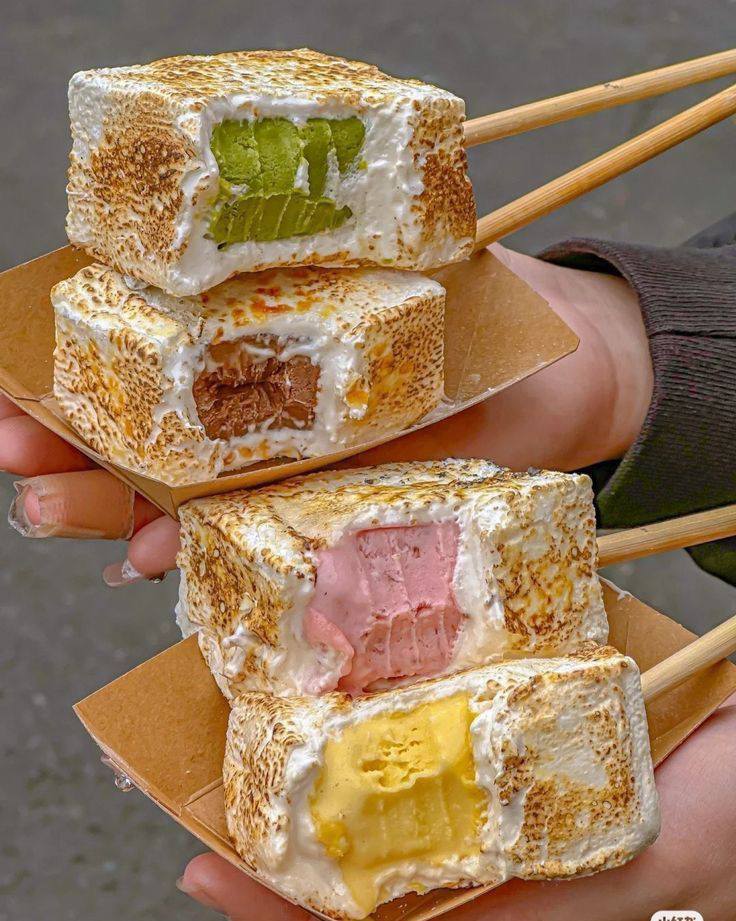ADVERTISEMENT
# **Ice Cream Marshmallow Burnt: A Decadent Dessert for Every Occasion**
Few desserts combine the comforting richness of ice cream with the warm, sweet, and gooey flavors of marshmallows like the Ice Cream Marshmallow Burnt. This dessert offers a delightful contrast between the cold creaminess of ice cream and the rich, crispy, and smoky notes of burnt marshmallows. Whether you’re a fan of s’mores or simply love the taste of roasted marshmallows, this dessert will surely tick all the boxes. It’s the perfect treat for those who crave indulgent, sweet experiences with a bit of flair.
In this article, we’ll explore the origins of this dessert, the science behind burnt marshmallows, a step-by-step guide to preparing it, and tips for making your own custom variations. By the end of this article, you’ll be ready to create your own Ice Cream Marshmallow Burnt to impress your guests or satisfy your own sweet tooth.
—
## **What Is Ice Cream Marshmallow Burnt?**
Ice Cream Marshmallow Burnt is a decadent dessert that combines rich ice cream with the smoky, slightly caramelized flavor of marshmallows that have been roasted or burnt. The marshmallows are usually toasted until they reach a golden-brown or charred state, giving them a slightly bitter edge that pairs perfectly with the cold, creamy sweetness of the ice cream.
The process of burning marshmallows is not as simple as it sounds—there’s a delicate balance between achieving the perfect burnt flavor and overcooking them. The result is a delightful contrast of textures and flavors: the gooey, chewy marshmallows mix with the silky ice cream, creating a dessert that’s both comforting and exciting.
While this dessert may be reminiscent of a campfire treat like s’mores, the addition of ice cream adds an extra level of indulgence. This is a dessert you can enjoy year-round, whether you’re celebrating special occasions, treating yourself on a quiet evening, or serving guests at a dinner party.
For Complete Cooking STEPS Please Head On Over To Next Page Or Open button (>) and don’t forget to SHARE with your Facebook friends
## **The History of Marshmallows and Their Burnt Flavor**
To truly understand the magic behind Ice Cream Marshmallow Burnt, it’s essential to dive into the history of marshmallows themselves. Originally, marshmallows were created using the root of the marshmallow plant (Althaea officinalis), which is native to parts of Europe and Asia. The plant’s roots were boiled to create a syrupy substance, which was mixed with egg whites and sugar to form a spongy, sweet treat.
While marshmallows as we know them today are made from sugar, gelatin, corn syrup, and air (instead of plant roots), the tradition of roasting marshmallows over an open flame has remained popular for generations. Roasting marshmallows creates a crispy, caramelized exterior, and when done just right, the inside becomes gooey and melted. The burnt edges give marshmallows a deeper flavor profile, with a balance of sweetness and smokiness that is hard to beat.
When marshmallows are paired with ice cream, the contrast in temperatures and textures becomes even more pronounced. The warm, crunchy marshmallows melt slightly into the ice cream, creating an exciting contrast between the crispy exterior and the cold, creamy interior. The smoky sweetness of the burnt marshmallows enhances the flavors of the ice cream, adding a layer of complexity to the dessert.
—
## **The Science Behind the Perfectly Burnt Marshmallow**
The key to making Ice Cream Marshmallow Burnt is understanding the science of roasting marshmallows. When marshmallows are exposed to heat, the sugar on the outside begins to caramelize, turning brown and creating a crispy outer shell. At the same time, the moisture inside the marshmallow evaporates, causing the marshmallow to puff up and become airy.
If the marshmallow is roasted too quickly, it can burn on the outside while remaining undercooked inside. On the other hand, if it’s roasted too slowly, it may become soggy without achieving the desired crispiness. The goal is to achieve a perfect balance between a crispy, golden-brown exterior and a soft, gooey interior.
The caramelization process that occurs when marshmallows are roasted is also what imparts that distinct burnt flavor. The sugars in the marshmallow undergo a reaction called the Maillard reaction, which gives the marshmallow its toasted, smoky flavor. The longer the marshmallow is exposed to heat, the more pronounced this caramelized flavor becomes.
When you combine these burnt marshmallows with ice cream, the combination of the marshmallow’s sweetness, smokiness, and slight bitterness pairs perfectly with the cold, smooth texture of the ice cream. The ice cream provides a refreshing contrast to the warm, burnt marshmallows, creating a mouthwatering dessert that you’ll want to indulge in over and over again.
For Complete Cooking STEPS Please Head On Over To Next Page Or Open button (>) and don’t forget to SHARE with your Facebook friends
